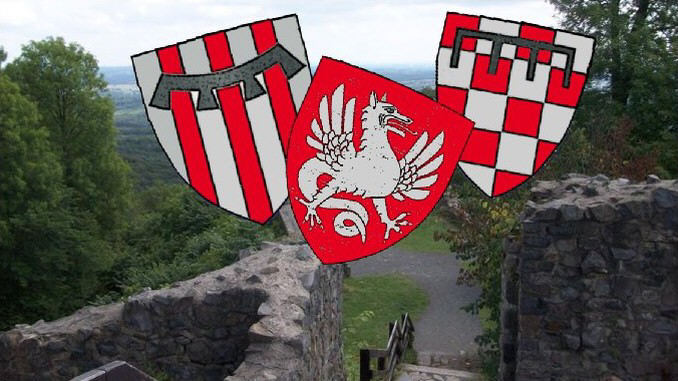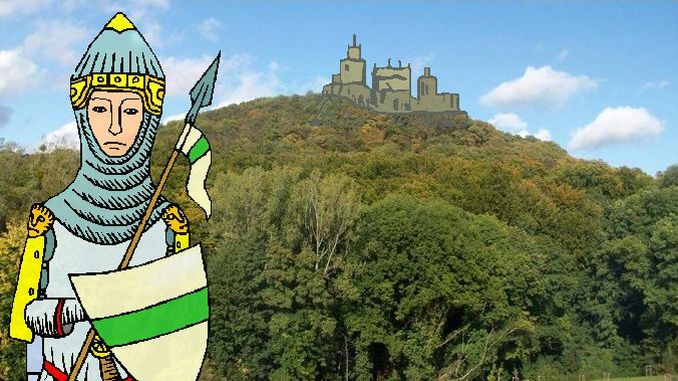
Besides the hiking trails and scenic viewpoints, the medieval castles are exciting places to see in the Siebengebirge.
Castles Drachenfels, Löwenburg and Rosenau
You can visit three of them in one day – Drachenfels Castle, Löwenburg Castle and Rosenau Castle. Yes, the mountains and the medieval castles have the same name, that’s a bit confusing. Moreover, there is Reitersdorf Castle in Bad Honnef on the bank of river Rhine, beneath the Siebengebirge.
Today, the castle ruins are tourist attractions. So, it is a bit difficult to imagine the Siebengebirge in the Middle Ages when these castles were built. Dense forests all around, dirt tracks rather than broad trails for pedestrians, riders and carriages, fogs, no lights and no inns. It must have been intimidating, especially on foggy days.
Impressing names
The Middle Ages are the era of knights, minnesong, Romanesque and Gothic art. Similarly, most castles got quite impressive names. For instance, Drachenfels translates as Dragon’s Rock, and Löwenburg as Lions’ Castle. These names sound like places from a fairy tale. On the coat of arms of the burgraves of Drachenfels we see a silver dragon on a red background looking to the right. Where do they come from?

The lost castle
Nothing has been remained of the medieval castle on top of Mount Wolkenburg. Today we have only a sketch of how it may have looked like. At the time of the Salian dynasty, the archbishops of Cologne were powerful men in the Holy Roman Empire and in our region.
Archbishop Friedrich I of Schwarzenburg (1100-1131) secured the south of the archbishopric by building several fortifications, among them Castle Wolkenburg in 1118 and Castle Rolandseck on the other side of the Rhine. On the eve of the second crusade in 1146, when once again the Jews were persecuted, he offered the Jews of Cologne shelter at Wolkenburg Castle. The archbishop himself liked to come here, and he also died at Wolkenburg Castle.
Castles and Rhine tolls on the Middle Rhine
In the Rhine valley, many ruins and even well-preserved medieval castles have remained. Our region is located at the northern end of the Middle Rhine Valley. Speaking in medieval terms, it is on the southern border of the power of the archbishopric of Cologne. Here, four of the seven prince-electors of the Holy Roman Empire held territories, namely the archbishops of Cologne, Mainz and Trier and the Count Palatine. In addition, many more or less local counts had their say as well.
The princes and dukes at the Rhine had discovered Rhine tolls as a source of revenue. Consequently, they had toll castles built to make sure that no ship could pass their territory without paying. The medieval castles in the Siebengebirge, however, were not toll castles. The nearest toll station was Bonn.

Be the first to comment